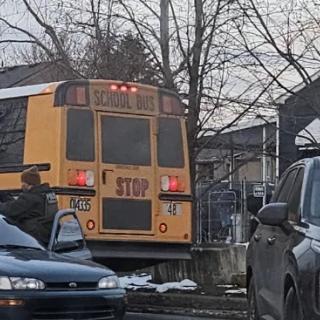Advertisement
Manuel Cuellar-Rocha remembers his first Cinco de Mayo on the Ohio State University campus. The fourth-year design major from Dayton does not recall it fondly. “Ohio State doesn't necessarily aid you much with getting used to campus life...you get thrown into the fishbowl with all the other students. I just kept thinking, 'Man, I can't wait until I see someone that looks like me.' I felt extremely intimidated...I truly understood what it meant to attend a predominately white institution.”
Before long, he saw an eye-opening example of racial stereotyping that personified the unfriendly climate toward Latinos on campus. “My first semester when I got here there was a senior crawl,” he says. “A student organization designed the t-shirts for the senior crawl, which happened to be on Cinco de Mayo. On the shirt, they had a figure wearing a sombrero, crawling. When people had an issue with that shirt, no one could understand the view of the minority who saw that shirt and were disgusted. I don't celebrate Cinco de Mayo, and I sure as hell don't celebrate it crawling wearing a sombrero.”
While the more than 2,200 Latino students at OSU might be used to such seemingly innocuous racial barbs, other taunts are far more blatant and threatening. Many were shocked, saddened and felt harassed when a message declaring “TRUMP 2016 BUILD THE WALL” appeared, scrawled in chalk on the pavement of the Oval. Followed by a bigger one. And an even bigger one.
While some Latino students tell stories of enduring racial slurs, such as one who walked by a dorm as someone shouted the n-word at him from an upper-floor window (“And I'm not even Black,” he says), many cite a “hostile environment” on campus toward Latino students that has much deeper, institutional roots. They feel marginalized by a lack of Latino faculty, staff and administrators on campus to serve as role models and mentors. And even more so by a lack of facilities and resources that are afforded to other minorities.
The Latino makeup of the OSU student body, like that of the nation in general, has risen sharply in the past few decades, rising from 1.1 percent in 1989 to nearly four percent now. Yet, critics say, faculty and staff representation has not kept pace. As of Fall, 2013, faculty of color at OSU were nine percent Black, five percent Asian, and just two percent Latino. Most Latino faculty are, predictably, in the Spanish department. And the number of those who aren't is declining, as just this year two senior Latino faculty members – one in the English department and one in History – departed. One of the two was reportedly frustrated by not being offered tenure at OSU, and left to accept a tenured position at another Big 10 university.
Elena Costello Tzintzun, a PhD student in Spanish and self-described career student, has been on campus since enrolling at age 16 in 1997. “When I was an undergrad, two thirds of African-American males did not graduate,” she says. “Now it's the opposite, the statistic is switched. But Latino males are now that statistic. So we would like to see some of those same resources that were given to those other groups. There is no one in the office of Diversity and Inclusion charged with working with just Latino students, but there are nine, I believe, full-time staff charged with helping African-American males.” Blacks comprise about five percent of the OSU student body, Latinos nearly four percent.
Until fall of 2015, there was no official space for Latino students to meet, study and just feel comfortable in a place they could call their own. Starting in the Fall, they shared space with the Humanities Institute at an off campus location on 15th Avenue. The Knight House, leased by the College of Arts and Sciences from the Office of Student Life, provided a sense of community that was lacking for Latino students. But the cultural oasis was short-lived, however, as cost-cutting measures
by the College of Arts and Sciences shuttered the facility in December.
English professor Frederick Aldama founded the Latino and Latin American Space for Enrichment and Research (LASER) at OSU. It is his office – a faculty member's office – that Latino students use as their meeting and study space.
In December, a group of Latino students, led by members of Sigma Lambda Beta International Fraternity, sent an open letter to OSU President Michael Drake, which was published in the OSU student newspaper, The Lantern. It outlined a list of demands which included improved services to increase student access to resources and scholarships, revised admissions strategies to actively target Latino students, official space for Latino students on campus that would be “staffed and open at any moment,” and funding for Latino groups and organizations. Other demands included hiring and retaining Latino staff and faculty leaders, a Latino Arrival Program to help new students get acclimated to campus life and the establishment of a Latino alumni network that is backed by the university. Finally, the letter requested a meeting with Drake to discuss the matters in person.
Drake eventually agreed to a short meeting on the 26th of April, during finals week. Chris Davey, spokesman for Ohio State, called the meeting, which included various other OSU officials, “open and productive. We are actively engaged in a range of issues they have put forward.” On the meeting space issue, nothing has been decided, but Davey said the university is “committed to working with our Latino students to ensure that they have places where they can meet...but no specific resolution has been arrived at at this point.“ Biology major Girardo Cado, who attended the meeting, was cautiously optimistic. “I wouldn't say we were extremely excited afterward, but we weren't disappointed either. It's more like a work in progress.”



